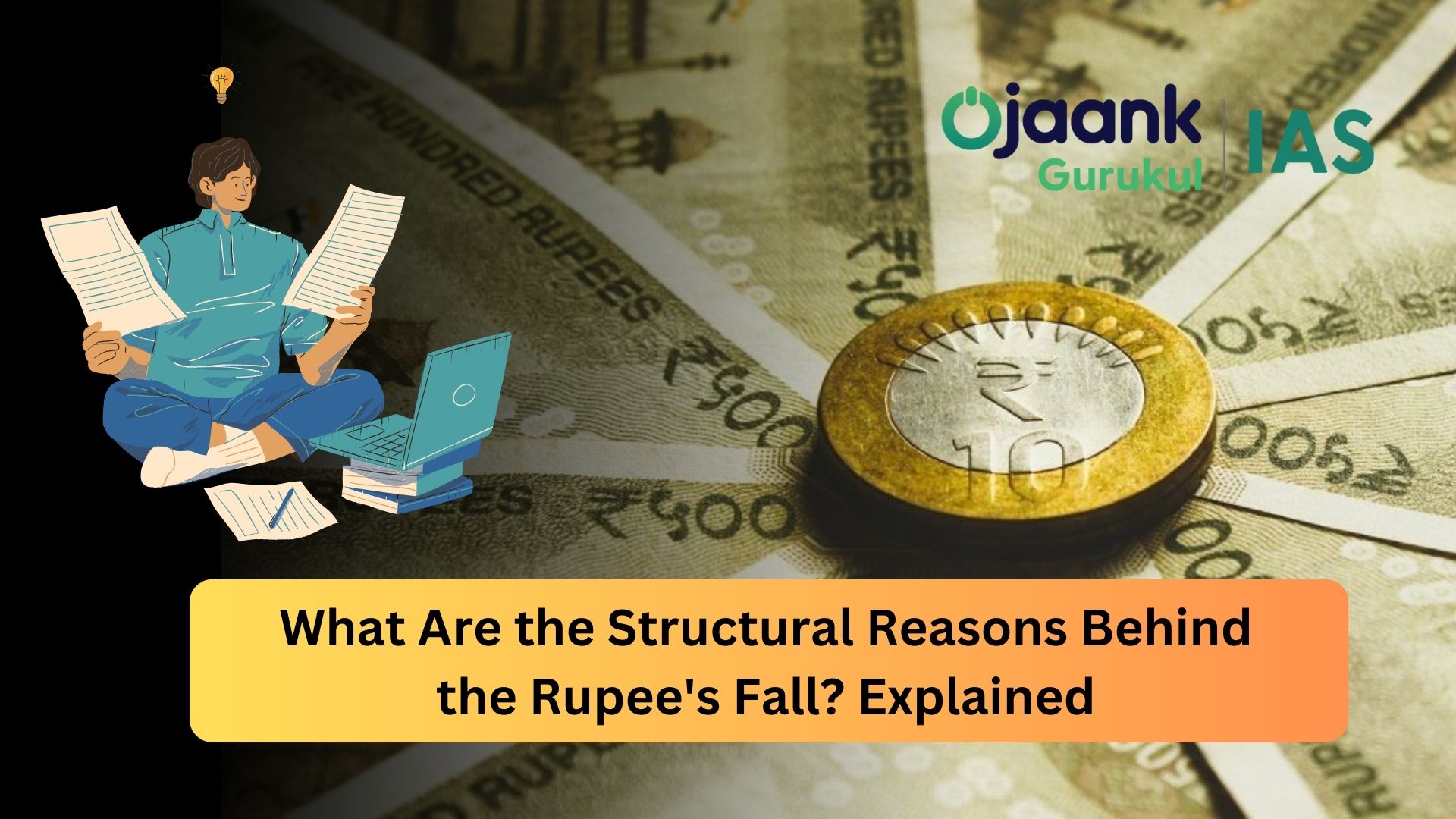What Are the Structural Reasons Behind the Rupee's Fall? Explained

Introduction
The Indian rupee's recent depreciation to an all-time low of 86.71 against the US dollar has ignited widespread concerns. This steep decline highlights structural and cyclical factors tied to domestic challenges and global economic headwinds.
The Reserve Bank of India's (RBI) interventionist stance has managed short-term stability but risks exacerbating long-term vulnerabilities. Let’s delve deeper into the reasons behind this phenomenon and its broader implications.
Structural Reasons Behind the Rupee’s Decline
1. Prolonged Dependence on RBI’s Currency Inflexibility
The rupee’s managed float status has become increasingly rigid, mimicking a currency peg. This mercantilist approach suppresses natural market forces, constraining economic resilience. RBI’s foreign currency assets have declined by $47 billion since October 2024, creating liquidity tightness and exposing the banking system to risks.
2. Declining Growth Differential
India's narrowing growth differential compared to global economies undermines its competitive edge. Since 2008, the INR-USD has depreciated by 90%, far exceeding the average 38% depreciation seen across emerging market currencies. This long-term trend reflects structural economic weaknesses.
3. Rural Demand Slackness
The rural economy’s fragility has amplified, marked by declining productivity, increased agricultural dependence, and eroding household savings. These factors have chipped away at economic growth, leaving the rupee vulnerable to shocks.
Cyclical Influences: The Role of Global Forces
1. US Dollar Strength
The US dollar index surged 10% in 2024 due to unexpected economic strength, forcing the US Federal Reserve to revise its rate cut plans. The widening US-India interest rate differential further pressured the rupee.
2. Global Geopolitical Risks
Rising geopolitical tensions, including trade wars and regional conflicts, have escalated policy uncertainties. Coupled with China’s greater currency flexibility and reserve depletion, these dynamics have reinforced dollar dominance against emerging market currencies.
3. Foreign Investment Outflows
India's equity markets underperformed compared to the US, with Nifty and Sensex delivering an 8.3% YoY return versus S&P 500's 26%. Coupled with a 3% rupee depreciation, foreign institutional investors are redirecting funds to more promising markets.
Implications of the Rupee’s Fall
1. Rising Inflation
A weaker rupee inflates import costs, driving up prices for essential goods and raw materials. This puts further strain on household budgets and business margins.
2. Export Competitiveness
While a weaker rupee theoretically boosts exports, the lack of structural reforms and global demand uncertainties limit tangible gains.
3. Liquidity Crunch
RBI’s aggressive forex interventions have drained domestic liquidity, restricting credit flow and amplifying pressure on the banking system.
The Way Forward
1. Letting the Rupee Float Freely
RBI must allow greater currency flexibility to reflect market fundamentals, easing pressure on foreign reserves and domestic liquidity.
2. Recalibrating Monetary Policy
With India’s real policy rate differential turning negative, monetary easing needs careful calibration to avoid exacerbating external imbalances.
3. Leveraging NRI Deposits
Enhanced NRI deposit schemes, akin to those seen post-Taper Tantrum in 2013, can provide much-needed foreign currency inflows to stabilize the rupee.
Conclusion
The rupee's fall is a multifaceted issue rooted in both structural inefficiencies and external pressures. Addressing these challenges requires bold policy decisions, including greater currency flexibility and structural reforms to boost long-term economic resilience.
As the global economy becomes increasingly volatile, India must adopt a balanced approach to safeguard its financial stability and growth trajectory.
By understanding these nuances, policymakers, businesses, and investors can better navigate the complexities of India’s evolving economic landscape.
Download File
For Free Pdf File = Click Here.
Stay updated on India’s economic trends. Subscribe to our newsletter for the latest insights!